Season 2 Episode 9 TranscriptI'm going to be running a free challenge soon, all about breathing better. So I put out a survey in preparation for that, asking people about their challenges around breathing, and breathing practices, and that type of stuff. One big answer that really stood out to me was that when asked the question, “What could you use better breathing for”, 95% of the people that responded to my survey answered, “stress, anxiety and mindfulness”. 95% is a lot. That's huge. And that is definitely something I can work with here. Now, to that one person who responded that they didn't need that- Congratulations! Please share your secret. To the rest of us, we've all heard about breathing techniques, we've all heard about doing breathing practices, and we know that they are related to stress and anxiety and mindfulness improvements. There's lots behind this- lots of research, lots of resources. I will link to a few of them in the show's transcript. I have some colleagues that have some really nice resources, really nice programs that you can try. I also have some other resources in general that I can share. I'm not going to get into all that right now. What I am going to get into here is the bottom line, which is that breathing helps everything.  Yes, it helps stress. A few episodes ago we talked about the Vagus nerve, and the parasympathetic (or the rest and digest system) and how that directly opposes the fight or flight system. Breathing absolutely helps you get into that rest and digest place. You can also use breathing, to help control things in your body. When you're exercising, when you're moving heavy objects- whenever you're using muscles, you can use a breath to help control all of that as well, for fuel, for power, all of it. But what does this have to do with your pelvic floor? Well, think of your body as two separate sections- there's your your midsection, your torso- everything from your neck to your pelvis; and there's your limbs. Ignore your limbs ignore arms and legs for a second. In that torso, you have essentially three cavities, and they act like individual balloons. You have one in your chest. It's called the thoracic cavity. You have one in your belly, called the abdominal cavity, and you've got one in the pelvic bowl called, funnily enough, the pelvic cavity. Each of these cavities makes and takes pressures from the rest of your body. So when you're breathing well, in that thoracic cavity, (which, spoiler alert, is where your lungs reside) It helps take the pressures, off of the abdominal and then the pelvic cavities. Often, we're not breathing, with our rib cage with our thoracic cavity, however, And so, that balloon isn't functioning. The belly cavity, that abdominal space, ends up doing most of the work of the breathing, and that is putting excess and unnecessary pressure into the pelvis. This is quite frequently one of the foundations of pelvic floor dysfunction. And it simply goes back to, how do we breathe with our ribcage the way that the ribcage was designed. Now, that “how to”? I’m going to explain that in next week’s episode. But today I just wanted to point out all of the layers here. There's layers in your body to help move things like breath around. And when used appropriately, everything works better. But then the breath itself has so many layers of help for the rest of you. Yes that breath helps with stress, yes that breath can help with physically moving around.  But if you do anything like sing, or do a podcast, or any kind of public speaking, or presenting on a stage or in front of the zoom screen, if you play a musical instrument, if you have a manual hobby, like gardening or anything that requires some exertion a little bit more than knitting (both gardening and knitting, our hobbies of mine, I'm not knocking that!) but the manual exertion type hobbies- the breath is going to be something that is very important for your stamina, for your endurance, for your longevity in those as well. So next week we’re going to get into a little bit more about how to breathe better. For today, I want you to just think about where does your breathing actually happen.
0 Comments
Season 2 Episode 8 Transcript I wanted to talk about what it really means to have a holistic perspective, not only in terms of the pelvic floor that I focus on so much, but in that whole body, inside and out, top and bottom side to side, front and back setup that I am so passionately interested in, as well. The best way I can describe it is that your body is a system of levers and pulleys- your bones and your joints- and they are covered with rubber bands- muscles. So, any misalignments in your bones, any stuckness in your joints, and/or any tightness in your muscles, affects everything else.
The point is, everything is connected, and I don't mean that in any wishy washy kind of metaphor, it's literally the case that the foot bone is connected to the head bone.  So whenever you've got aches and pains, so much more than just that part that's having the ache and the pain is affected. And chances are that where you're feeling pain is just where it's landed, and not actually where the problem is. This idea of muscles as rubber bands is a good one. Because there's all sorts of sizes and tensions of rubber bands, think about ones that you can buy at an office supply store as compared to the ones that come wrapped around your vegetables. There's all kinds of different tensions different thicknesses different widths of rubber bands, and the exact same thing is true of the muscles in your body. There's all sorts of length and thicknesses and strengths and sizes of your body muscles. And they have to be balanced, to keep you vertical and ventilating. So think about those rubber bands for a second, think of an old rubber band, that's been wrapped around something that it's held together forever. And when you finally go to move it, that rubber band, just crumbles because it's been held tight, stretched out in that one position for so long. It's lost all function as a rubber band. Or have you ever used a rubber band in the freezer? I just pulled a bag of veggies, out of my freezer and I had wrapped a rubber band around the length of the veggie back to keep it closed. So when I took the rubber band off the whole bag, it stayed all stretched out, and only as it slowly thought, did it shrink back up again. because again it had been held in that one position for so long that it just held it shape afterwards Or, one more here- how about if you've ever gotten a hot meal at a grocery store, and it's gotten, you know they wrapped a rubber band around the meal container, and it got melty, it got sticky and gummy and lost its stretch. Muscles can do all of these things too. They can be so tight and so held in one place that they lose their stretch and they lose their function, or they just fall apart or, it takes them a long time to get back to the shape that they're supposed to be in. And we want to keep your muscles supple and moving- again, not just in and around that pelvic floor that I focus on, but in and around your whole body, since we know that everything is connected.  So try this. Make a fist. That clenched fist represents a tight muscle. I know there's a lot of muscles in your hand, there's a lot of muscles in your forearm that caused this. Just imagine the whole thing is one tight muscle. From here, how can you strengthen that muscle? Well, you can't. It's stuck there. You have to loosen your grip and pull your fingers back, let go, stop making the fist in order to be able to do anything to that muscle in the first place. So sometimes the answer to a tight muscle is stretching. But all the time, the answer to a tight muscle is to stop holding the tension in the first place.  And that tension is probably coming from somewhere else. So my holistic approach is to reposition the whole body from the foot to the forehead, so that all of the levers and pulleys and rubber bands, all of the tensions in your body, even out and go backto where they actually belong. This lengthens, and releases and loosens tight muscles so that we can then begin to strengthen them. And even then, it's not strength for strength sake that we're building. It’s strength to hold the good posture and the good form positions that prevent that unnecessary tightness and pain. So when I talk about a holistic perspective to your health, when I talk about a holistic full body approach to pelvic floor health, I'm not just giving that lip service. I'm really thinking about how all of the structures in your body interact with each other, and how we can make that work for us as we relieve not only your pelvic floor symptoms, but all kinds of other things, all kinds of other living pains that you've just been living with, in your daily life. And instead of just getting by, you can actually live comfortably, strong, graceful, and holistically. Season 2 Episode 7 Transcript
Herbal Stress Blends Herbal Stress Blends are first You can find these pre-made formulas in teas and liquid extracts like tinctures, and I mention them first because there's an excellent chance you already have one or more in your cupboard right now. In general, a stress relief formula is going to hit the major stress highlights of: • emotional upheaval • mental chaos • and body tension So they already have good herbal ingredients to start with! Go ahead and start here, especially if this is what you already have on hand. Make your tea, or take your tincture, or whatever the remedy is, whenever you need. Before, if you know you're heading into a stressful event; during, if you see it building; and after, to come down and recover well. And also, try your stress relief formula when you're NOT stressed, so you have a baseline to know what to expect! Pay attention to how you feel as you sip your tea, and also how the next 10-30 minutes feel, so you know what to expect. Chamomile Now let's talk about Chamomile If you’ve followed me for a while, or taken my Sitting Pretty free workshop for sitting pains, you’ve heard a bit about Chamomile! It’s common, yes, and it’s pretty gentle, but Chamomile is also impressive plant medicine. The part I want to talk about here is its incredible ability to relax skeletal muscles. What’s great about using Chamomile in a tea is that there’s no waiting around- the aromatic, volatile parts that do such a good job relaxing you evaporate quickly in hot water, so drink them up! You can also find lovely topical Chamomile products like lotions and liquid soaps. The company Weleda makes a really nice baby line with Chamomile in it, and since it’s gentle enough for a baby’s skin it’s also gentle enough for a face or neck massage, or a nice hot bath. This isn’t an ad, it just a suggestion [transcript note- this is an affiliate link], and you can find other nice topical products with Chamomile in them, besides the Weleda line, though I do suggest using organic ones especially since your face and neck skin is so delicate. One other Chamomile suggestion I have is a Chamomile Glycerite- it’s a remedy made from fresh flowers, full of their aromatic goodness, in sweet, gentle vegetable glycerin that you can take by mouth directly from the dropper or in another beverage. It's delicious! I’ve gotten mine through Herbiary- I’ll link them in the transcript. Calendula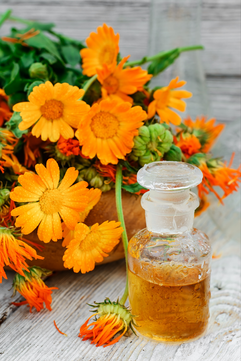 That Weleda baby line I mentioned also uses Calendula because of its ability to quickly and gently heal skin, like from diaper rash. Calendula also is a wonderful lymphatic- it helps move lymph fluid just below the skin. This is important because we have so much lymph coming from the face and sinuses, and what’s called “glymph” draining from the brain when we sleep, and it all has to exit through small channels in the neck that can get even more restricted from tension. A nice self-massage using some Calendula infused in almond or jojoba oil, or in a gentle body wash, can help all this drain out normal lymph plus the extra lymph that's created as the body tries to heal damage caused by the tension. In addition, any damage caused by inflammation, or for example forcing tight muscles to move like by chewing with tense jaw muscles, will be helped to heal by Calendula. Lavender Another lovely aromatic that can help with tension is Lavender. In addition to smelling wonderful, which is its own relaxing trigger for me, Lavender has a few specific actions of its own: 1. It’s cooling, reducing inflammation 2. It’s analgesic, meaning it can relieve the pain of tension, inflammation, and headaches 3. It helps heal by stimulating cell reproduction You can find Lavender in culinary items like teas and even cookies! It’s also very common in topical products, everything from lotions to linen sprays to shampoos. I do always suggest using organic products, to reduce the synthetic chemical load on your skin, and I always suggest NOT using essential oils. They are a precious resource, and I much prefer them in their already well-diluted state. One of my absolute favorites is the Lavender hydrosol that Barefoot Botanicals in Doylestown PA distills from their own plants in their homemade still. It’s water that’s super saturated with the Lavender essential oil, so it’s safe to spray on your skin, or even over the top of a beverage as a fancy finish to a drink! I’ll link this in the transcript too. Solomon's Seal This is a little less well-known herbal remedy- it’s not an everyday plant like Chamomile or Lavender, but boy oh boy is it helpful here. This is Solomon’s Seal- this is a root medicine that encourages our connective tissue to heal. Connective tissue damage is typically a long-lasting problem because it has so little blood flow- when you look at an anatomy picture of the muscular systems, the white tissue that connect muscles to each other and to bones is this connective tissue, and it’s white because there’s not much blood in it! Typically, you can find Solomon’s Seal in an infused oil, which is a nice topical remedy to massage into your neck and jaw, and you can also find it as a tincture. This is an alcohol-based herbal remedy that you can use directly on the skin, though it may stain the skin a bit, and/or you can take it by mouth also. I’ve gotten a really nice infused oil from Avena Botanicals in Maine, and my favorite tincture is from Angel Shockley in VA. She has agreed to let me mention her as a resource for her tinctures but she says, and I quote, “There's only one catch - I don't post tinctures for sale in my shop. Anyone wanting to get some would need to reach out to me.” So on Etsy you’ll look for VAHerbAngel, and I’ll link to her in the transcript as well. Then send her an Etsy message if this is something you wanted to experiment with. Her Solomon’s Seal tincture is so rich and well made, I swear it tastes like chocolate! I just take a couple drops by mouth almost every day- not very much, because it’s so concentrated and so precious. When I’m consistent with this, my neck and face feel so much better, even if I’m doing an extra lot of talking or computer work. Blue Vervain There’s one more herb here I want to mention, and it's Blue Vervain. It’s even less well known than Solomon’s Seal in terms of general herbal knowledge, but if you’re either in frequent and great discomfort, or getting into herbs and wanting to step outside your comfort zone a bit, let me introduce you to Blue Vervain. There are a number of plants that might be called Blue Vervain- I’m specifically talking about Verbena hastata. Blue Vervain is an intense bitter, that really shakes up the nervous system. The herbalist Matthew Wood describes it perfectly, so I want to read you the description from his book New World Plants: “It is suited to people who are very intense, even fanatical, laying impossible standards on themselves or others. They strain to live up to these impossible standards, or to impose them on others. Yet, they have not the strength to sustain this activity, so that they are too intense mentally and emotionally, but suffer from physical weakness.” He goes on to say, “The specific indication to look for is stiffness in the nape of the neck.” When Matthew Wood calls this a specific indication, that stiffness in the nape of the neck, a specific indication in the herbal world is a direct link. When you see this thing, think of this herb. In general, herbs aren't "for" our problems, but in specific, acute cases there are some very clear lines that we can draw between a problem and a solution, being a particular herb. In this case, Blue Vervain is the first thing to call upon for help when you've got stiffness at the nape of the neck. Another one of my teachers simply said, “It’s good for whiplash, and tall people.” Which, I guess I'm considered tall, I'm 5'9", so I do keep Blue Vervain. And when my neck, especially the back of my neck, is acting up and I lose range of motion, I turn to Blue Vervain. Bitters relax muscles, among other actions, and this deeply bitter plant has a specific affinity for relieving tension and heat at the base of the skull. It’s a serious bitter, though. In large or even medium doses it can be an emetic- that means it makes you throw up. I have a bottle from Barefoot Botanicals in Doylestown that is about 2 years old now. It lasts that long because I only take a few drops when I’m feeling stiff-necked, both literally and metaphorically. It does NOT taste good, I'll warn you of that again. But it is very strong medicine and you don't need a very high dose.  So there you have it- a couple of my favorite herbs, specifically about TMJ, tongue tie, and headaches. I really hope you find relief, both with the movement in the last episode and with the herbal ideas in this episode. And I'd love to chat with you more about this. Reach out on the socials or in email and let me know if any of these are help you! The transcript for this episode will be on the blog on Friday. Listen Here Holistic Lifestyling Podcast Season 2 Episode 6 TranscriptIf you've ever experienced TMJ, tongue tie, or headaches coming from your face and neck tension, you know what I'm talking about. The best graphic I ever saw of it showed the tension lines going over the jaw and coming out of the eyeballs like lightning. That was perfect to me. First things first: I'm not going to fix your tongue tie, TMJ, face pain, or headaches during this here little podcast episode! I want you to get your expectations set early. This is a complex issue, with skeletal, muscular, nerve, and habit components. Plus, I understand that watching demonstrations of things that can help is often more helpful than just listening to me describe them, so I encourage you to go check out the additional resources I'm going to share with you. What I am going to do is talk to you about some of the factors that contribute to exacerbating your discomfort, that you probably have some control over. I'm also going to talk about some stretches and moves, that might help you be less uncomfortable when you have an episode. If you're wanting more specific moves, then I want you to take a look at my Face Tension and Pain mini course at my website, paulasherbals.com. I also have some ribcage and back stretches in my free Resources hub on my website as well. Unnecessary Strain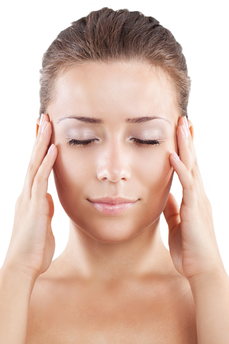 First, let's get aware of the things we do that are causing muscle tension in your face and neck in the first place. There's familiar things, like gritting your teeth. There's also less familiar ones. A big thing I experience, and that others have been surprised to realize they experience too, is working my whole jaw, or sometimes just my tongue, when I'm doing some kind of manual task. This is usually when I'm cooking or washing dishes- during these repetitive tasks like stirring and chopping, I find myself mimicking the motion with my face! I don't know definitively why this happens, but I have a theory. Personally, I have tongue tie, which means that my tongue doesn't move very much because of how it's attached behind my bottom teeth. So my face and neck muscles have to do almost all of my talking- which is no small task, since I talk for a living And also, as a pilates instructor, I have frequently found myself cuing clients to relax their shoulders during a completely unrelated stretch, like a quadriceps stretch. The line I use is, "Your shoulders don't stretch your quads, no matter how hard they try!" I think that's what's going on here. My face and neck muscles are accustomed to overuse, so when my arms are working they try to as well. It's really hard to stop this- it takes constantly becoming aware of it, stopping it, and repeating that indefinitely. Eventually you start anticipating it and trying to not let it happen in the first place- this is how you know you're making progress! But catching yourself straining face and neck muscles when they're not needed is certainly an important step to lessening the strain on those muscles in the first place. Tech Neck Another contributor to your pain is Tech Neck, I'm guessing- this is the situation when we spend too much time in a forward head thrust looking at screens, usually, but also driving, reading, and such. A forward posture like this means that everything behind your face- the back of your neck, the base of your skull, the muscles on your skull, and the muscles down over the back of your shoulders- they all stiffen. They're trying to pull back and prevent a forward collapse of your heavy head, while your head is dragging them forward. And they end up stiff and frozen, and also overstretched so you can't even strengthen them like this. You can't build strength into an overshortened or an overstretched muscle. It means that everything in front stiffens as well, in an attempt to prop up your head. The muscles at the front and side of your neck, into your jaw and your collarbone, and into your face, start trying to brace you up. We need to get your ears back over top of your shoulders, where your head is balanced between the front and the back of your neck, and nothing is working in a way that it's not supposed to be. The passive way to do this is to lay flat on the floor on your back. You can put something under your knees, or even rest your lower legs up on a chair or the couch, but the point is to let your neck relax in line with your shoulders. When you're really tight like this, laying on your back is going to have your head tipped up. This is because that forward position forces your neck to bend up, to lift your chin so you can still see. Pay attention to where your gaze is when you're lying down- it should be going straight up; if you had a Nerf dart suction-cupped on your forehead it would point straight up, not diagonally back, in an ideal world. Let your neck relax so that your forehead tips more straight up, instead of backwards. Your ribs are probably arched up towards the ceiling too, so relaxing them down and relieving the excess curve in your upper back is necessary as well. Now, I do have a mini course available specifically about Tech Neck, if this is a big problem for you. That is available on my website, PaulasHerbals.com, under Work With Me. This mini course has more active stretches that you can do to actively draw your ears back over your shoulders. This lying back and letting your neck stretch is a passive stretch that works. If you need more active things, check out my mini courses on my website. The Eyes Have It Here's one tiny move that has been amazingly helpful to me. We know that staring at computer screens all day isn't good for us. And you also may know that the act of looking at a distant object or vista or just anything further away requires your eye muscles to relax- which is the opposite of the computer strain. So, try this. Give yourself a few neck stretches- a few slow, deliberate Yes's and No's, a few side to side tilts, a few gentle full circles in both directions, paying attention to your range of movement. Now, hold your hand out in front of you, with your index finger up like you're saying "Number 1!" Focus you eyes on your finger, and slowly and smoothly pull your arm in until your finger touches your nose or the center of your forehead, then reach it all the way back out. Keep your eyes focused on your finger, and feel your eye muscles shifting to stay on your finger. After you've done this, repeat your neck stretches. You should feel more range of motion. There's some quirks of anatomy here that closely tie your eye muscles to the the base of your skull muscles, so moving and stretching and reliving tension in one of those sets of muscles relieves it in the other set at the same time. Wild, right?! Next up, the herbsThis has been a little look into three physical things you can do to help your face and neck and jaw tension, whether you're suffering from TMJ, headaches, tongue tie, or anything else.
I always recommend doing these things BEFORE you're in pain, so you know what they feel like and then you'll also know if you're doing them right when you need them! So practice these things- they might help stave off a flare up of your pain, or help you relieve some discomfort if you're in the middle of one. Next week, I'm going to talk to you about some herbal remedies that have also saved me a lot of grief from my tongue tie over the years. These are plants that can relieve tension, heal inflammation damage, and are particularly, specifically helpful with the kinds of pain and problems these face and neck muscles give us. Listen to the episode here Holistic Lifestyling Podcast Season 2 Episode 5 Transcript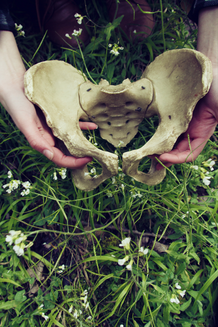 If you’ve been following along with the stress series I’ve got going right now, you’ll recognize that the last few episodes were all about a broad, holistic perspective on understanding and starting to manage your stress with internal and external supports, like with herbs or movement, for example. It seems like a good time, then, to get a little more focused and specific. While what I teach is all based on the idea of whole-body approaches to wellness, we accomplish that by looking at the little, specific parts that are foundational to your overall wellness and how we can improve them. One of the most frequent specific parts you’ll hear be talk about is the pelvic floor, and there’s 2 reasons for this- Everyone has a pelvic floor, and it serves as a huge part of your whole body’s stability, mobility, and functionality. If there’s a problem in one or more of these areas, the pelvic floor is involved Lots and lots of people have mild to moderate issues with their pelvic floors that they are just living with, either not knowing or not willing to deal with it right now because something else is on fire and is more important. I get it. So I call attention to the pelvic floor and its impacts on your health and wellness, because it’s something that not enough people know enough about, to realize they can change and improve their PF function without too much complication- without adding another dumpster fire. I’m trying to put out the embers of minor PF issues before they develop into a 5 alarm problem, and it’s pretty simple and straightforward to start this work- it’s not as overwhelming and complicated as many people fear. What does this have to do with stress? Well, a whole bunch, it turns out. Emotional Stress One definition of “stress” is “work”. The work your body does, whether it needs to or not, is stress for it. This is normal. This is how muscles strengthen and bones grow, this is how vision works and thinking works. But- it’s easy to see how you can create more work for yourself with internal stressors. Worries, beliefs, fears, all the things we think about, that we “stress” about, have physical impacts on our bodies. In particular, we can look at how what’s on your mind impacts your pelvic floor. In general, chronic stress like from chronics worries, causes your muscles to tighten in your whole body. For example, your neck gets tight, usually in a forward pose we call tech neck. This will impact your shoulders and arms, your vision, your jaw, your sinuses and ears, and the rest of your spine down to the tailbone that connects to your pelvis. Also, your digestion is a series of muscles so tension restricts it and slows things down- this adds weight! I’m not talking about the unhealthy, unhelpful “lose weight” pressures that diet culture dumps on us. I’m talking about the literal weight constipation causes in our abodmens, that puts pressure on all your other internal organs, ligaments, and such. That’s no good. Another muscular tension piece to think about is your blood vessels- arteries are muscular! When they’re tense, they’re smaller, restricting blood supply AND increasing pressure through them. Also no good. So emotional stress is a very real thing that impacts your physical, tangible body in very real ways. There’s lots you can do with, to, and for your whole self- body and mind- to help these impacts. For starters, I can refer you back to the three part podcast series I just finished about Holistic Perspectives on Stress! I talk about some external supports, like breathing and movement, and internal supports like herbal remedies, that can help. Relieving total, overall, general stress will help relieve the pelvic floor specific impacts you may experience. Posture Stress Another way stress impacts your pelvic floor is through posture. Think about the posture that is sometimes called a ‘human cashew’- all curled in on yourself. That’s a common pose when you’re worried or afraid or stressed, or working at your computer, or watching tv, or driving… I think you can see where I’m going with this! Posture is a big deal, and it impacts all of you. When you‘re all curled up, and we’re talking about how this pressures your pelvic floor, think of squeezing a balloon. The bends in your belly from curving your spine displace all the contents of your abdomen and if you have any pelvic floor dysfunction, you’re going to feel it there. This could be back pain, it could be heaviness or dragging feelings, it could be incontinence or near misses in the bathroom department, it could be reflux or heartburn; or even headaches, TMJ, hip problems, and breathing restrictions. All these can be caused simply by posture. Good posture isn’t about aesthetics, it’s not about just trying to look good. It’s about function in your body. When things are stacked and aligned appropriately, all the everything in your torso works better. If you’ve ever watched Downton Abbey, think back to the beautiful posture of the ladies in the show. It’s not only upright and regal, it’s relaxed! They're not stiffly holding themselves, it’s almost casual. That’s what I’m talking about- strength and ease through good posture. Now, there’s lots to be said about finding and practicing good posture. The online pelvic program I teach, both 1:1 and in small groups, is focused on this functional stacking from the feet all the way up your body including the pelvis, for posture and form. But if you’re looking for the first, most basic step to start practicing better posture at your desk, check out my Sitting Pretty free workshop in the Free Resources section of my website. It’s a little training video that will teach you how to sit better, as the first step to improving your posture and its impact on your pelvic floor. Again, this is available for free in my Free Resources Hub at paulasherbals.com Exercise and Movement Stress There’s one final way that stress can impact your PF that I want to talk about here, and that is through exercise and movement. Now, to some extent, emotional and postural impacts of stress on your pelvic floor might be considered a little more “passive”. They’re just there, being bothersome, all day long, and if you use the tools I’ve given you in this episode you can start to make simple and profound improvements for yourself. This topic of exercise and movement, however, is a bit bigger, and definitely what I consider to be an “active” ingredient of your pelvic floor issues. Now, this may be an unpopular opinion, but I don’t think exercise should be a punishment. In practical terms, you aren’t ever going to “work off” food or being sedentary or whatever else you might feel badly about. And in cultural terms, you don’t DESERVE to feel badly about any of it! Move because it feels good to you, let it feel good- or not, and then experiment with some other things to find something you DO like- and rest more than you have been because if you’re alive you’re probably working too hard! There, I said it. Ok, all that being said, there’s very real, practical implications to exercise and the pelvic floor. If you’re experiencing stress incontinence- when you leak during exercise, or sneezing or coughing or laughing, or any time that comes from movement, you don't need this! And you don’t have to put up with it, it’s not something you’re destined for.
Holistic Lifestyling Podcast Season 2 Episode 4 Transcript  What does "R & R" look like to you? Everyone has their own particular favorite way to rest, restore, relax, and recuperate- mine involves a hammock and a pillow and a book and a nap- but at the heart of this idea is one particular body structure- the Vagus Nerve. Our fight-or-flight stress response, called the Sympathetic Nervous System, is responsible for creating and regulating all our reactions to stress, and it has a clear headquarters- called the HPA axis- that controls the feedback loops that respond to all the internal and external stressors we experience. By the way, it's our culture-informed thinking that distinguishes between "good" and "bad" stress. To our HPA axis, it's all the same stress. Survival is an extraordinarily basic need, so a phone beep is the same as a tiger. I talked a bit more about this in episode 2 of this Season 2 Stress series. On the flip side, our R&R system, the Parasympathetic Nervous System, is the one responsible for actually opposing the stress response and allowing us to, well, live. The PNS is spread out all over the body. There's no headquarters for the Parasympathetic system because we were designed to live in this state most of the time, so it's expecting to be the default position of our nervous system. Take that in for a second. The Parasympathetic Nervous System, the R&R system, should be our default. But which system are your more familiar with? Right. Fight or flight, the Sympathetic Nervous System. We live in fight or flight, we're bombarded with messages to it and information about it. That's why it takes work and practice to get back to the rest and restore state, that PNS that should be our all-of-the-time situation. It's kinda backwards, to have to work to get into a resting state, but this is the world we have created. We have to make do. So what we've got so far is the 'fight or flight' stress response, which is the Sympathetic Nervous System, this is the one we're all familiar with in our experiences and also that we hear a lot about; and we've got the 'R&R' living response, the Parasympathetic Nervous System, the PNS, which we want to get back to more frequently and more quickly for a bunch of reasons I'll tell you about in a minute. When we're trying to access the PNS, when we're trying to get into that R&R state, it's not as easy or straightforward as accessing the fight or flight sympathetic system is. I mentioned there is no specific headquarters for the PNS and that it's spread out all over your body. However, the Vagus Nerve comes closest to filling this role of PNS HQ. And guess what- you can exercise your Vagus! This means you can strengthen your ability to get back into (and stay in) your R&R state whenever stress has bumped you out of it. The Vagus is a special nerve because it comes directly out of your brain into your head and facial structures, like your ears and voicebox, rather than coming out of your vertebrae like most other nerves do, and it travels from your head down into your abdomen where it helps all kinds of organs and functions along the way. The Vagus is involved with things like speech, thyroid function, digestion, blood pressure, and elimination. This means there's a lot of places we can impact it, and a lot of places for things to go wrong. The amazing thing about the Vagus is that when it's activated, things RELAX. Usually, we think of the nervous system activation in terms of tension- activate a nerve and muscle contracts, that sort of thing. Instead, muscles and structures connected to the Vagus nerve expand and relax when it is activated. This looks like:
Much of your Vagus Nerve is in your abdomen, and your abdomen is cram-jam full of stuff. You've got solid organs held in place by nets of connective tissue, hollow organs expanding and contracting, miles of intestines squashed in by core muscles, not to mention bony cages and girdles and a spine built like a stack of teacups. Getting as much of that as aligned and functioning properly as possible is essential to the Vagus having room to activate. It can get suppressed and turned off just like any other nerve. So I'm going to share 3 mini exercises with you to help this alignment and function. Exercise #1- Stack Your Ribs and Hips Try this. Lie on your back and find the bony triangle markers in your pelvis- 2 hip points on either side of your hips, and a pubic bone down front in the center, south of your belly button. You're lying on your back, so these 2 hip points and pelvic bone point should all be pointing straight up at the sky. We're not working with the side of your hips, we're working with the front of them. Assorted belly-ness is not the point here, the bony markers are, and may I just state for the record that size is not an indicator of health, nor is health an indicator of value. Exit soapbox. So these 3 bony markers, right, they need to be parallel to the floor. Do a little tilting forward and back- you'll find that the pubic bone raises and lowers relative to the hip points. Then find that parallel to the floor position. This is called a neutral pelvis. Next, your ribs are probably arching up towards the ceiling. Bring them down to the floor, so the upper back is relaxed down and you feel a flatness across the shoulder blades, not a pinching or winging position. This is a neutral rib cage. Now try these 2 positions at the same time- both sitting, and then standing. When you're upright your neutral pelvis is now perpendicular to the floor (straight up and down, aka 90 degrees to the floor), and the ribs are down over the hips, not popped forward in fake "good" posture. These are the quick and dirty directions- I give more clarity and demonstrations in videos in my free Resources Hub. Once you've aligned your skeleton, it's time to start letting it move in this position: Exercise #2- Breathe With Your Lungs Obvious, right? Well, no. We do a lot of our daily breathing with either our belly or our chest, which causes problems. Now, breathing practices are different, and have their own purposes. I did talk last time, in the last episode [edit to add, 2 episodes ago!], about breathing as an external activity you can do to help manage your stress response. This time, I'm talking about your daily, not-really-thinking-about-it breathing, but learning this will help you in your breathing practices too. Since your belly is so crammed with stuff but there are no bones in your belly, it's all held in place by an intra-abdominal pressure created by your core muscles. When you just use your belly to breathe, it messes with this abdominal pressure and that can lead to problems like pelvic floor issues, hernias, or even reflux. Breathing with your chest is difficult, since the breastbone doesn't actually expand. This means your breaths will be shallow, making you breathe more often, and it can create anxiety responses because of the pressures on your upper back spinal nerves when you make the upper back arch to lift your chest to breathe in. But because most of us walk around thrusting our chests out in fake good posture (you can fix this with Exercise #1 pleasepleaseplease), we HAVE to belly and chest breathe since the ribs have nowhere to go.  After you do exercise #1, once you've gotten your ribs relaxed down, it's time to reintroduce your ribs to the breathing machine again. Take a belt, an exercise band, or your hands and wrap them around your rib cage so you feel the front, back, and sides of the rib bones. Slowly take a breath in, and feel for 360 degrees of rib cage expanding, all the way around. Feel tension increase in whatever you have wrapped around your torso as you inhale and expand the ribs, and feel that tension decrease as you exhale and close the ribs back together. Relax your shoulders and your belly, we're trying to move only ribs. This might seem simple and not worth the effort of trying as you listen to me, but I challenge you here and now to see what it actually feels like in your ribcage. By popping your ribs forward, in that fake good posture, you've probably lost a lot of the muscles in and around your ribs, and the points where the ribs meet your spine are probably really stiff and inflexible. It is HARD to get your ribcage to move in the way I'm describing here. I challenge you to see for yourself. It takes practice to get all this moving again, but once you do your ribs can do the work they were designed to; they can buffer the breathing pressures they were made for, easing the load on your abdomen and upper back. This lets the pressure on your Vagus nerve normalize as well. Keeping unnatural pressure in your torso because of poor posture keeps the Vagus from responding appropriately. Aligning and normalizing the way you hold and move your body is the first step to improving how your Vagus nerve works. Once this proper positioning is in play, it's time to talk about tone. You might know of tone in terms of muscles- this is when muscles have a certain amount of engagement all the time. They are ready to respond. Nerves, including the Vagus, can also have tone and be more or less prepared to respond. Good tone is always a good thing. Exercise #3- Tone Practice Since the Vagus goes through so many head and neck structures, there are a bunch of ways we can directly impact it to help strengthen it. Here is a list of small practices you can work into your day. All of these trigger the Vagus nerve to activate, building its tone and also relaxing things in the body so they work better:
These ideas will improve the tone of your Vagus nerve. Why do you care? When you've got good Vagal tone during a stress response, you'll:
And good Vagal tone is associated with:
So, we're trying to access the PNS after you do experience stress, so that you can return to an R&R state. You can help this along by aligning your skeleton to ease physical stress, and by practicing triggering your Vagus nerve so it's got good responses when you need them. All of these are pretty simple, beginner level ways to exercise you Parasympathetic Nervous System, and stop living in the fight or flight system. Now my question to you is, do you already practice any of the exercises I gave you today, or have you been inspired to try something new? Share how it feels for you by leaving a comment, and tagging me @paulasherbals if you're commenting on Instagram. I look forward continuing this conversation! Holistic Lifestyling Podcast Season 2 Episode 3 Transcript Whether we’re talking about stress or any other body system that can use support, herbal remedies are an important part of a holistic approach to your wellness because how you treat your insides is just as important as how you treat your outsides. In the last episode, I talked about the external things you can do, the activities you can do with your body to influence and improve your stress responses. If you haven’t listened to this, I recommend you download it now and catch up! Today I’m going to talk about the internal things you can do to help manage your stress responses. My focus is on the herbs and the remedies that you can work with, but I do want to mention things like a good diet and drinking more water and taking your multivitamin can also all be parts of these more internal supports. I’m not a nutritionist and I don’t want to go there, so eat well and drink more and follow the good nutrition advice of the professionals! I am, however, an herbalist. Yes, I’m a movement coach and a pelvic floor specialist, and also an herbalist. If this is a surprise to you, then I suggest you check out my season 1 episode 8 where I introduce myself and explain why I’m not a guru! My very first podcast episode, labeled number 00, will also help you understand who I am and how you got here on a podcast about whole body wellness, inside and out. First Things First In my capacity as an herbalist, it’s so important to me to say first that plants weren’t invented for our things. Pharmaceuticals were, and they work well in that capacity. But plants are their own complex chemical beings, and it’s more useful to think of them as a friend group. Different people play different roles in your life, but these people also stand alone and have their own lives. Different plants can play different roles in your life, but they can have a very different relationship with another person at the exact same time. Plants don’t exist to solve our health problems. My classic example of this is coffee. You might drink a cup or 2 in the morning. Someone else might live on it, fueling their bleary eyed workday and demanding more of their body and the coffee bean than is reasonable or healthy. On the other hand, I am one of those people who can’t drink coffee at all- it gives me heart palpitations and makes me vibrate like I’m going to stick to the ceiling and I get nauseous right away. Same plant, different relationships with different people. The point is, there’s no “herbs for stress”. What there is, is a group of plants who interact with us and our nervous systems in different ways that end up helping us regulate, resist, and be more resilient to our internal and external sources of stress. When you find a “stress” blend in the tea section at the store or in a tincture bottle at a health food store, or if you sit down with a clinical herbalist who makes specific suggestions or even blends you up a personal formula, the individual herbs in that blend haven’t been randomly chosen- I hope!- simply because they’re “stress” herbs. 3 Categories of Stress Relief We’ve got 3 basic categories of herbal stress relief-
Let me give you the super short, mini overview: Nervines influence the nervous system.
They were given the name “Adaptogens” by the Russians in the 1950’s and 60’s while they were trying to figure out how to force more work from their workers in terrible conditions. There is some terrible research behind the knowledge we have now, and I believe we can best honor the people who suffered for these experiments by working with these plants in pursuit of recuperation and health, which honors their more traditional understanding, instead of using them to force long work days days and all nighters and those types of personal abuses that were desirable under communism, and are often sources of misplaced pride in today’s grind culture. Adaptogens all act differently- they fall on a spectrum between calming and stimulating, but all of them help improve energy levels. Also, which plants specifically fall under the heading Adaptogen is sometimes up for debate, but that ability to have personal and professional experience and discussions is one of the things I like best about herbalism! Adaptogens you may have heard of include
Tonics or Nutritives are herbs that blur the lines between food and medicine. These are plants that contain very high amounts of things like minerals and other micronutrients that help your body repair and restore itself long term. They are often worked with as teas that steep overnight so they get very strong and concentrated: Now What Nervines, Adaptogens, and Tonics- these are 3 groups of herbs that play different roles in helping us resist, recuperate from, and build resilience to our stressful lives. The point of giving you this overview is NOT to make you an expert after a few minutes of a podcast! Rather, I wanted to introduce you to the idea that plants have chemical complexities, almost personalities, and that our familiar, more medical approach of “take 2 and call me in the morning”, that idea that there’s a pill for your condition, doesn’t work with plants. This isn’t to overwhelm you, I’m not suggesting you now have to become knowledgeable about all the possible plants that might help you manage stress better. Instead, what I hope this does is give you an overview about why there are so many ingredients in stress blends, and also why your favorite blend might be different than someone else’s! Finding the herbs that work best with you can be like dating- you might just wade in and start sampling all of them, or you might work with an herbalist who matchmakes FOR you, simplifying and shortening the process! Where to StartIf you are listening to this and now wondering where to start, there’s a couple of simple things you can do first. These ideas are in increasing order of your own personal involvement:
Remedies And keep in mind, if you pick an herb to try out- or for that matter, an herbalist to work with- they may not be a good fit. That's perfectly fine. You know more about how they work now, plant or person, and you might be able to suggest them to a friend of yours sometime who they would fit better with. One final note is that I'm mostly talking about tea here because it’s super simple to put hot water on a teabag, and you can find them most anywhere. Tea is one of the easiest starting points to working with plants, but another pretty common remedy you’ll see on the shelves if you go to a fancier grocery store or an independent health food store or maybe an herbalist’s shop or stand at a farmer’s market, is a tincture. This is a more concentrated remedy than tea- usually it’s an alcohol-based extract of the plant. Think of putting vanilla beans in vodka to flavor it, but stronger and with the purpose of extracting the therapeutic benefits of the plants, not just flavor. It might not be alcohol, there are other options like glycerine or vinegar, but the point is these are remedies in little bottles with dropper tops that you take by the drop or the squirt, as compared to tea that you drink by the pint or the quart. You might take the tincture directly in your mouth, or you can add it to other drinks to dilute and disguise the flavor- the instructions will give you direction as to how and how much to take. Because they’re more work to make tinctures are more expensive than teas, but because they’re concentrated they’re also used in much smaller doses so they last longer, and because they're already liquid they’re much easier to work with than tea is. So if you’re feeling like tea is too much work, too many steps with water and containers and hot or whatever is getting in your way, you can venture into the apothecary section of your grocery store or farmer’s market and try tincture-based remedies instead! I’ve mentioned a lot of specifics today that I’ll link in the shownotes and the show transcript when it comes out later this week. I’m trying to give you a broad overview of how to start working with herbs that can help you manage stress on your own. If the idea of sitting down with an herbalist sounds more your speed, or you come to that decision later on, do a local search and see who might be practicing in your local area. If you come up empty then reach out to me and we’ll see if we can find you a good herbal fit.
Listen to Today's Episode Holistic Lifestyling Podcast Season 2 Episode 2 Transcript Welcome back to our ongoing series about a holistic perspective on stress. Last time we talked about the broad strokes of how we understand and manage our stress responses, and what to focus on. If you haven’t listened to that episode, hit pause and download it now so that you can catch up really quick. I think, personally, that the topic of Stress is a great way to really explore full body ways of thinking. Everything that your body does internally, or notices externally, is a source of stress- this is how things get done in the body! It’s not inherently bad to experience stress. And the way we react, how our bodies automatically respond, is all by itself holistic. Every system in the body is constantly playing a balance game- turning up and turning down, inputting and outputting, resting and reacting. So when we talk about “stress” as something to reduce or eliminate, we’re really talking about things you can do to help your internal systems find equilibrium, and things you can do to block or shield external stressors, including taking supplements that help your internal systems function 3 External PracticesToday, we’re going to look closely at the external stressors coming at you, and the things you can physically do to help yourself manage stress responses are going to sound like a familiar list:
The reason we care is because these active choices you’re making directly impact your nervous system. Later on in this series I’m going to tell you more about the “rest and digest” system. For now, just know that this is the system in your body that not only OPPOSES the fight or flight system, meaning it actively shuts down chronic stress when it turns itself on, but it’s also supposed to be the default position of our nervous system. We tend to live in fight or flight, but we’re supposed to live in rest and digest and our bodies want to get back there! #1: Deep Breathing The important thing to learn right now is that we can only influence this Rest and Digest directly in two ways- through visual stimulation, and through breathing. When we close our eyes and shut off visual input it helps our Rest and Digest to activate. The act of seeing is the act of our brains being on alert to recognize potential danger. Blocking that out is a shortcut to easing the input of external stressors. Deep breathing is the other way we have to activate this system, which in turn quiets the fight or flight responses. There are piles of breathing practices and techniques you can learn about, not to mention apps, websites, and devices to prompt you and track you and help you practice- you don’t need me to rehash all that. Just pick one and start breathing! #2: Exercise and Movement Practices Now, the second practice is where I think things get interesting! This is Exercise and Movement. Exercise certainly stresses the body, that’s it’s job, and the idea is that on the other side of exercise we’ve “worked it all out” in some way and that makes us feel better. So for me the big question is, Where’s the line between helpful and just more stressful? Again, there’s more details coming in later installments of this Stress series, but the CliffNotes version of one of the major processes going on here looks like this: When we’re constantly exposed to micro-stressors (as in, when we live our familiar lives!), our stress response is a constant, low-level drag on ourselves. Immune function is sub-optimal, digestion is slow, sleep isn’t great, you see what I mean? But, when we have some sort of big “event” that causes big stress (think exercise or getting cut off in traffic), AND we manage to have a concrete end to that stress (like ending the exercise class and drinking some water), doesn’t it feet really good? That constant, low-level drag keeps us in limbo between actually having an acute response, and feeling fine, by dripping out our stress chemicals. It’s the same lifestyle that our ancestors might have recognized as seasonal lean times like Winter, for example. And when we experience this, we might start losing lean muscle, storing fat, sleeping more, and experiencing brain fog- all things that would help us survive a long winter. In contrast, a big event dumps those stress chemicals in large enough amounts to reach the critical trigger point that also shuts them off! And you can reach this critical point with only 45 minutes of walking at a pace that makes talking a challenge. It’s that simple and straightforward. (I’m paraphrasing here, but if you want all the good details I recommend you look into herbalist Tammi Sweet’s Anatomy courses, especially the Heart Coherence.) #3: Meditation One more piece here is meditation. There’s no question that meditation is a mental practice that helps us respond to, recover from, and be more resilient to stressors. And again, there are lots and lots of ways you can go about learning any of the many types of meditation, many of which include breathing practices. Personally I’ve used Chopra Center guided meditations, the Insight Timer app, and the “morning pages” style of journaling to quietly meditate. But here’s the fun idea I want to introduce into this discussion about breathing, movement, and meditation as practices that manage stress responses. Are you familiar with moving meditations? This can look like walking, or walking in a labyrinth, or doing a meditative practice like tai chi or qigong. It can be an engrossing yoga class, and I’ve seen it happen in my reformer pilates classes. Basically any movement that is slow enough for you to focus deeply on your movement and your breathing, and keeps you focused for at least 45 minutes, is a moving meditation. And to me, this is the best of all worlds, a win-win-win! You’ve got your breathing, your movement, and your duration. But however you physically get involved with improving your stress responses, the old adage ‘practice makes perfect’ certainly applies here. The more you practice, the easier and faster it is to get into the proper headspace and actually do the practice. I call these types of practices “external” because these physical things you can do, these practices like breathing, movement and meditation, are choices you can actively make for your body. Internal Practices Yes, you breathe all day every day but DEEP breathing exercises are something you do deliberately. Yes, you end up moving around during your day but choosing to do 45 minutes of moderate exercise takes deliberate thought, or they won’t happen. One more thing- there are passive, external practices you can choose as well. Did you ever hear of a “Digital Detox”? This is a deliberate disconnection from all things technology, and it’s one major way to manage the stressors that are coming at you. By removing yourself from the constant deluge of information and noise on TV, social media, email, notifications, ringers, alarms, you’re actively relieving your nervous system of the need to respond to them. This can be as easy as a few minutes drinking your first cup of something hot in the morning while staring out a window and refusing to do anything tech related until you’re done, or it can be as immersive as a long weekend at a cabin in a state park with no wifi or cell service. Since your internal systems are constantly filtering out stimuli and stressors, giving them a break can only help! So we have both active and more passive external activities that we can choose to take on to help manage our stress loads and reactions. This means, logically, that there are “internal” considerations too- and this is what we’ll look at next time. You have internal systems that are already reacting to stressors- the nervous and endocrine systems causing the stress responses, the digestive and immune systems shutting down to stay out of the way, the muscular and cardiovascular systems reacting…and the ways you can influence these systems include some fantastic herbal and food based remedies. So stay tuned for next week’s episode! LISTEN to today's episode Holistic Lifestyling Podcast Season 2 Episode 1 Transcript Stress. It’s such a tiny word, with such a big impact. It’s what keeps us safe, and it’s also what can hold us hostage. Finding a balance in there, where you respond appropriately and also manage to leave the response state and come back to a resting state, is the big goal. The first thing to really understand is that stress is just the process. Back in season 1 I talked about injury and healing, that was in episode 8, and I said the same thing about the inflammation process. Both stress and inflammation are just processes that your body has, to do important stuff. It’s when the shutoff signals don’t happen, or when the stressors themselves don’t stop, that we have issues. How We Understand Stress Stress response is a process we just have innate in ourselves because the world is a constant source of inputs for us to figure out and decide if they’re dangerous. Sources of stress can be external (events and situations that happen TO you) or internal (self induced feelings and thoughts), and the Mayo Clinic describes these this way: External Stressors:
And Internal stressors:
Taken together, these are the sources of stress that we can try to influence and support so our responses to them are healthy and appropriate. Arrgh! The stress of it all!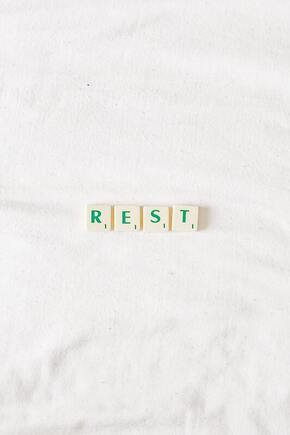 So, here you are. You’re stressed, and you’ve acknowledged and cataloged your external and internal stressors. Are you ready for that holistic approach to supporting yourself yet? Wait! There’s still one thing to consider- the spectrum of acute stress and chronic stress, because where you’re falling in between them matters to how, and how much, you can influence your response. Acute stress is a slap in the face- literally and figuratively. It’s the sharp shock, it’s the “flight” reaction to the perceived threat like a saber toothed squirrel or the zombie in a haunted house at Halloween that gets you out of there faster than a speeding greyhound. It’s also the freeze response to hearing an unexpected noise in your house at night, or when you get caught doing something you shouldn’t, or the fight response you might feel when a stranger touches you in public (or maybe that’s just me!) or that gives you the surge to wrench a stuck door open when you suddenly feel claustrophobic or trapped. And you know what? All things being equal, this acute response is pretty awesome. It allows you to react not only faster than thought, but stronger than usual. However, this uses huge amounts of resources, and your body needs time to recover from these experiences. Herein lies Project Number One- I’m not going to call them problems because I don't want to add to your problems! But these will be projects to take on if you want to make significant improvements or changes, so… Project #1:: R&R Our culture doesn’t allow for recuperation or convalescence. We’re pretty much expected to pretend that nothing big happened, even when something big has happened. That’s not normal! Having an event that causes a big, acute stress response just used up all your backup energy stores by engaging every one of your 200+ muscles- including your heart, which is now ready to outrun a hungry bear. It slapped your focus into superhero sharpness, and every excess body process you have just experienced a power outage so your energy could be diverted to saving your life. Turning your body back on just isn’t an instantaneous process, and you deserve to take some time to rest while you re-organize yourself back to homeostasis. Oh, and bonus- even when you don’t have a big event causing a sharp response, our daily lives are absolutely flooded with micro-stressors anyway so we tend to stay in this fight or flight place all the time. Don’t believe me? This is from a 2015 study from Florida State University: "Cellular phone notifications alone significantly disrupt performance on an attention-demanding task, even when participants do not directly interact with a mobile device during the task." And check out just the title of this 2014 study from Universität Mainz in Germany: Using TV, videos or a computer game as a stress reducer after a tough day at work can lead to feelings of guilt and failure. Ugh. And in 2020, Penn State announced that “[L]ife may be more stressful now than it was in the 1990s, especially for people between the ages of 45 and 64.” Ugh! Here’s what they said: "On average, people reported about 2 percent more stressors in the 2010s compared to people in the past," said David M. Almeida, professor of human development and family studies at Penn State. "That's around an additional week of stress a year. But what really surprised us is that people at mid-life [45-64] reported a lot more stressors, about 19 percent more stress in 2010 than in 1990. And that translates to 64 more days of stress a year." And this study was done with data from 2012. I can’t even imagine what the numbers are today. In fact, this is a really interesting article and I do suggest you read it! This brings us to... Project #2: Acute vs Chronic Stress Acute stress that doesn’t shut off and allow you to return to normal becomes chronic stress. And chronic stress is b.a.d. BAD. This happens either because there’s a problem with the “shut off” valve and the body keeps sending stress responses, or because the stressor itself doesn’t shut off and you’re in a constant exposure situation. If you’ve followed me for a while, you’ll know that I try to avoid black and white judgements. I’m very much an ‘all things in moderation, including moderation’ type of coach. BUT I draw the line at chronic stress. It’s like lead or cyanide or asbestos, in my opinion- any amount is too much! I could go on about why it’s bad. But if you’ve gotten this far with me you probably don’t need any extra convincing. So what am I going to teach you to do about it? Tackling Chronic vs Acute Stress First, what is the “it” exactly? Well, your body already has a system to deal with acute stressors. The sabre toothed squirrel, the vase falling off the windowsill, the slip on the stairs- that’s all instinct; either we respond quickly enough or we don’t. Luckily, in our current world, it’s much less likely to be our demise if we don’t! So I’m not going to spend time on our acute stress response- except to say that if your responses are slowed from fatigue, stress exposure, and other chronic conditions, what we do to improve chronic situations will only help to improve acute ones.
So- chronic stress and stressors are our focus. Remember that “project number one” calls for recuperation and a return to homeostasis, or balance, and that “project number two” is halting the chronic micro-stressors that influence us so much. These two projects are what we’re going to talk about more this month. Why am I setting us up this way? Well, the way I look at it is like this: you have a lot of authority over your life to make both big and small changes, even to things that have become familiar habits, that can improve the quality of your life. This is my general, default stance- one of my core values is the expectation that we all can exercise our own authority over ourselves. So when it comes to stress, understanding how we can influence how it works in our bodies is a big deal to me. There are a LOT of things you can do for yourself- internally, to change or improve how stressors affect you; and externally, both in terms of your environment and with supports like herbs that support how you work internally. These internal and external factors are what we’ll dive into in the next couple of episodes. Over the years, I'll bet you've developed what I call Living Pains. The sometimes small, sometimes big aches and pains that you've been living with, but are starting to really impact your life now. Are you tolerating any of these Living Pains right now?
 Avoiding and fending off Living Pains takes up a lot of time and energy, and you miss out on parts of life that you'd actually love to enjoy. Instead, you have Nearly-Living Experiences that don't quite compare. I think many of us are regularly having Nearly-Living Experiences, nearly living as fully as we can but not quite. We're ignoring these experiences in the face of our busy lives, letting them pass us by, and instead accepting Just Getting By (JGB) as good enough. Nearly-Living Experiences are the chances, opportunities, and openings for us to make the big and the small changes that would wildly improve our quality and appreciation of our lives- but the steps involved usually prove too much:
 It’s no wonder we can’t take advantage of our Nearly-Living Experiences, what with all the rest of Life™ going on, and that JGB is the habitual order of things. And it’s also no wonder that a LOT of people come to the realization that they MUST make some kind of change at a crisis point in their life, when JGB has stopped being a viable option. At that point, you realize that any amount of work required between step 1 and step 6 is reasonable, since you simply must get to step 6 to ever feel better. But this JGB habit, it’s not really a comfortable one, is it? It’s like the frog in the pot metaphor- if you put a frog in hot water, it’ll jump out. But if you put a frog in a pot of cold water then put it on low heat, the frog will sit there with its world getting gradually hotter, until it IS the soup. (I have no idea if this story is true. But it illustrates the point!) We tend to accept small injuries, small adaptations, small shifts in our patterns as just one more thing that we’re too overwhelmed to deal with. In the buffet of dumpster fires before us, what’s a sore ankle? Over time, though, that sore ankle causes a limp, that changes your gait and your hip function. This impacts your psoas, which tightens up and tilts your pelvis, impinging circulation in your abdomen. Slow, heavy, uncomfortable periods become the norm, and digestion stagnates too, leading to bloating and pain since lymph can’t drain away. Now your energy is low, because you’re not digesting well to support it, nor are you eating well because you feel like crap and that’s a hard place to make healthy choices from. While you’ve been focusing on the dumpster fires, your own building is burning. It turns out, you're your own firefighter in this situation. Nobody else can conquer your Living Pains, nobody else can help you move from Nearly Living and Just Getting By to living your fullest life. My work is dedicated to teaching you the what and the how so you can regain authority over your own self, and live that life you're missing out on. |
Fun Fact: I'm an herbalist and a movement coach. Not a doctor, or a pharmacist, and not pretending to be one on TV.
This is a public space, so my writing reflects my experiences and I try to stay general enough so it might relate to you. This does not constitute medical advice, and I encourage you to discuss concerns with your doctor. Remember, however, that the final say in your wellness decisions are always yours- you have the power to choose, you are the boss of you. And, some of my posts may contain affiliate links. If you make a purchase through them I'll earn a few cents. Thank you for supporting my work. This website is provided for educational and informational purposes only and is not medical, mental health or healthcare advice. The information presented here is not intended to diagnose, treat, heal, cure or prevent any illness, medical condition or mental or emotional condition. Working with us is not a guarantee of any results. Paula Billig owns all copyrights to the materials presented here unless otherwise noted. Categories
All
Archives
July 2021
|
|
info @paulaswellness.com |
DisclaimerThis website is provided for educational and informational purposes only and is not medical, mental health or healthcare advice. The information presented here is not intended to diagnose, treat, heal, cure or prevent any illness, medical condition or mental or emotional condition. Working with us is not a guarantee of any results. Paula Billig owns all copyrights to the materials presented here unless otherwise noted. |




















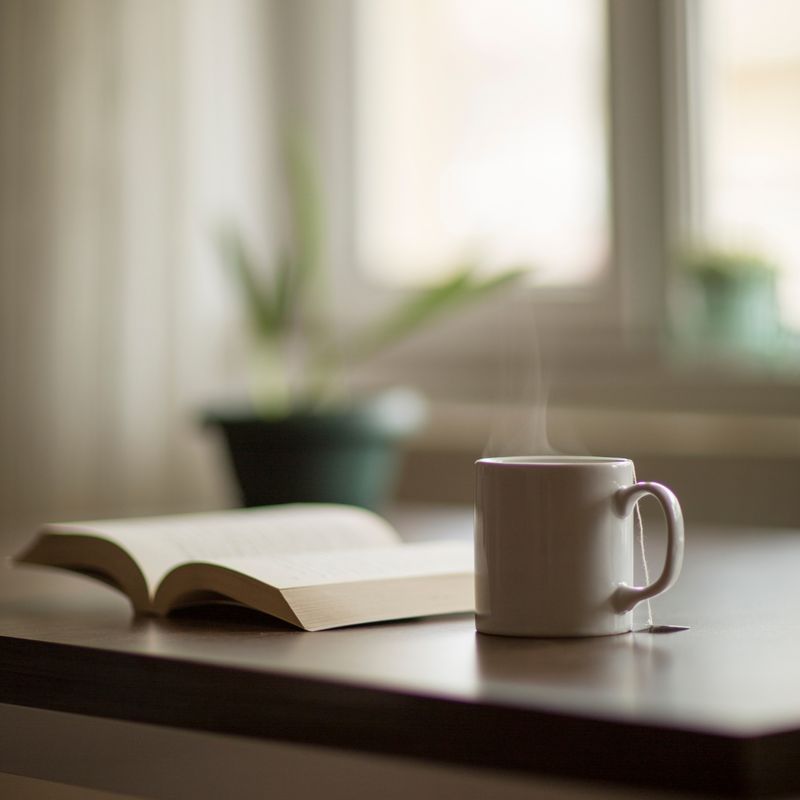



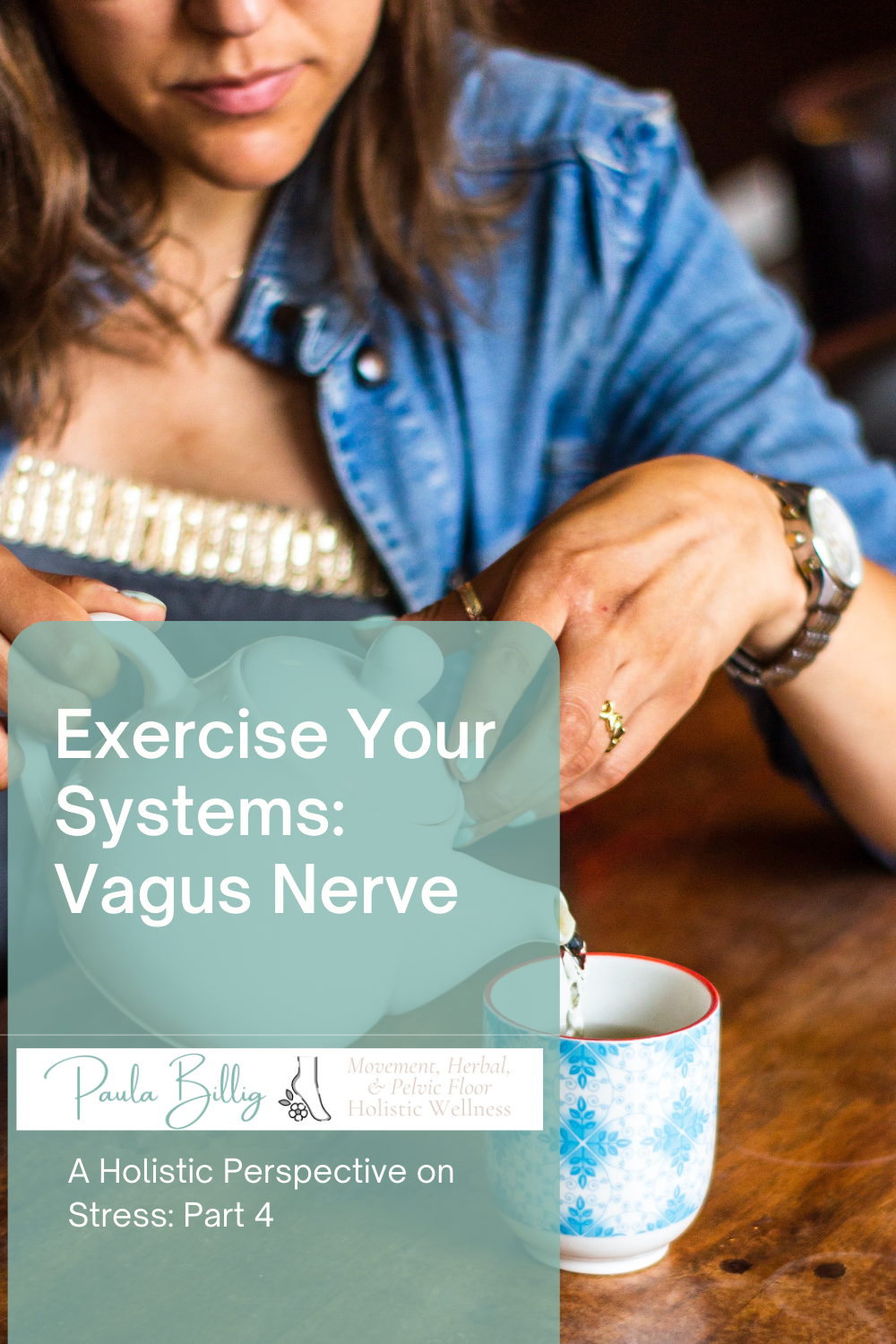

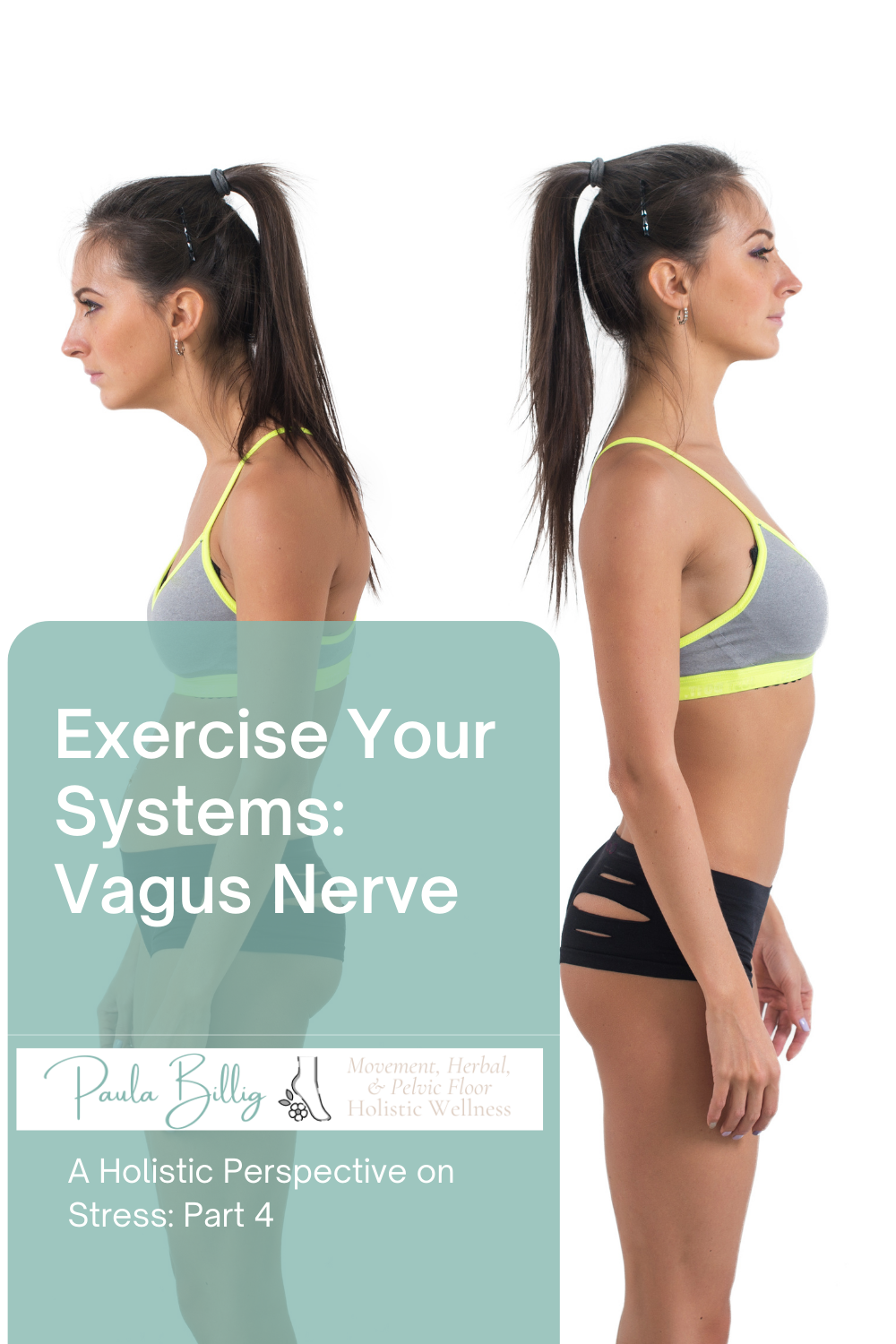
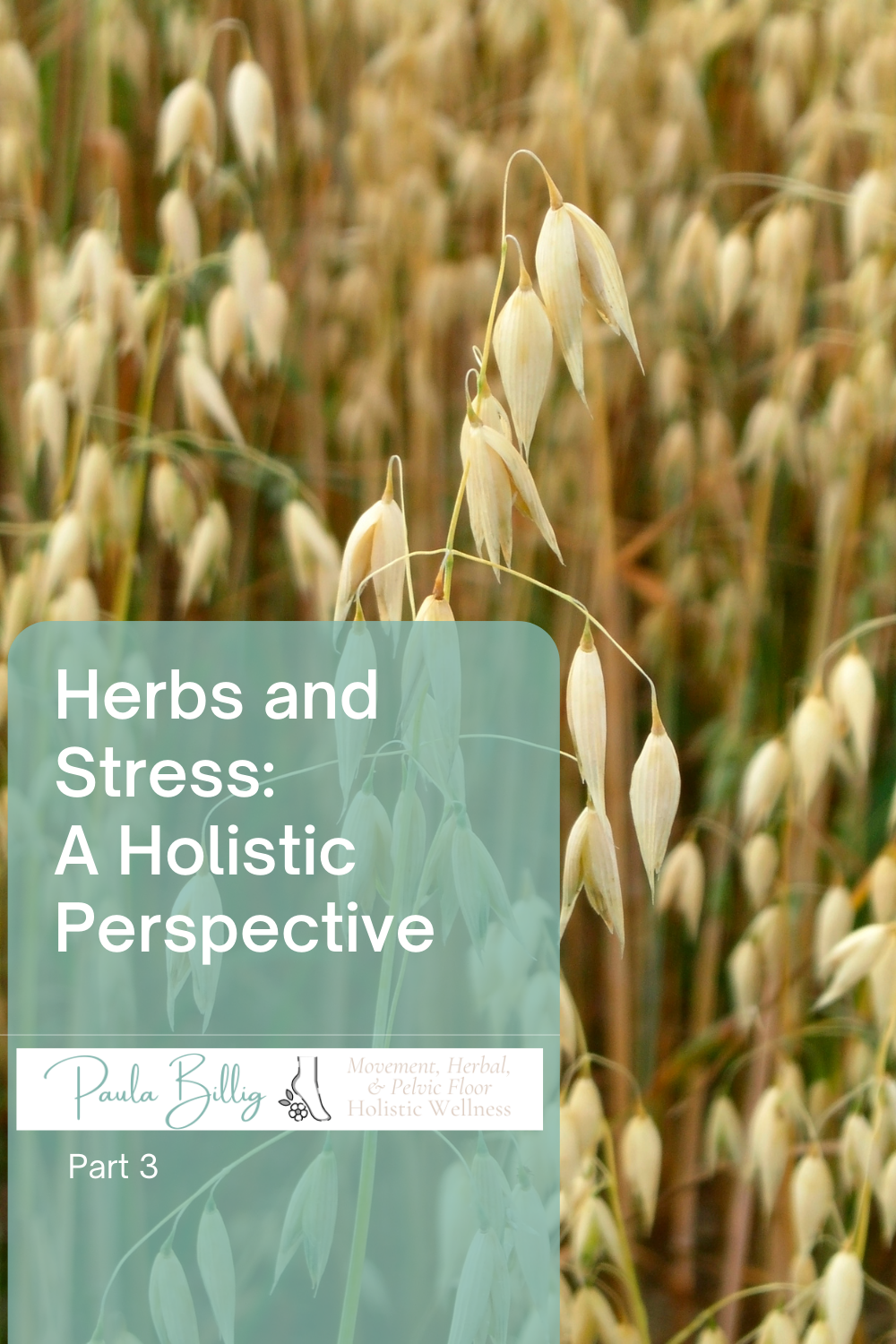









 RSS Feed
RSS Feed

